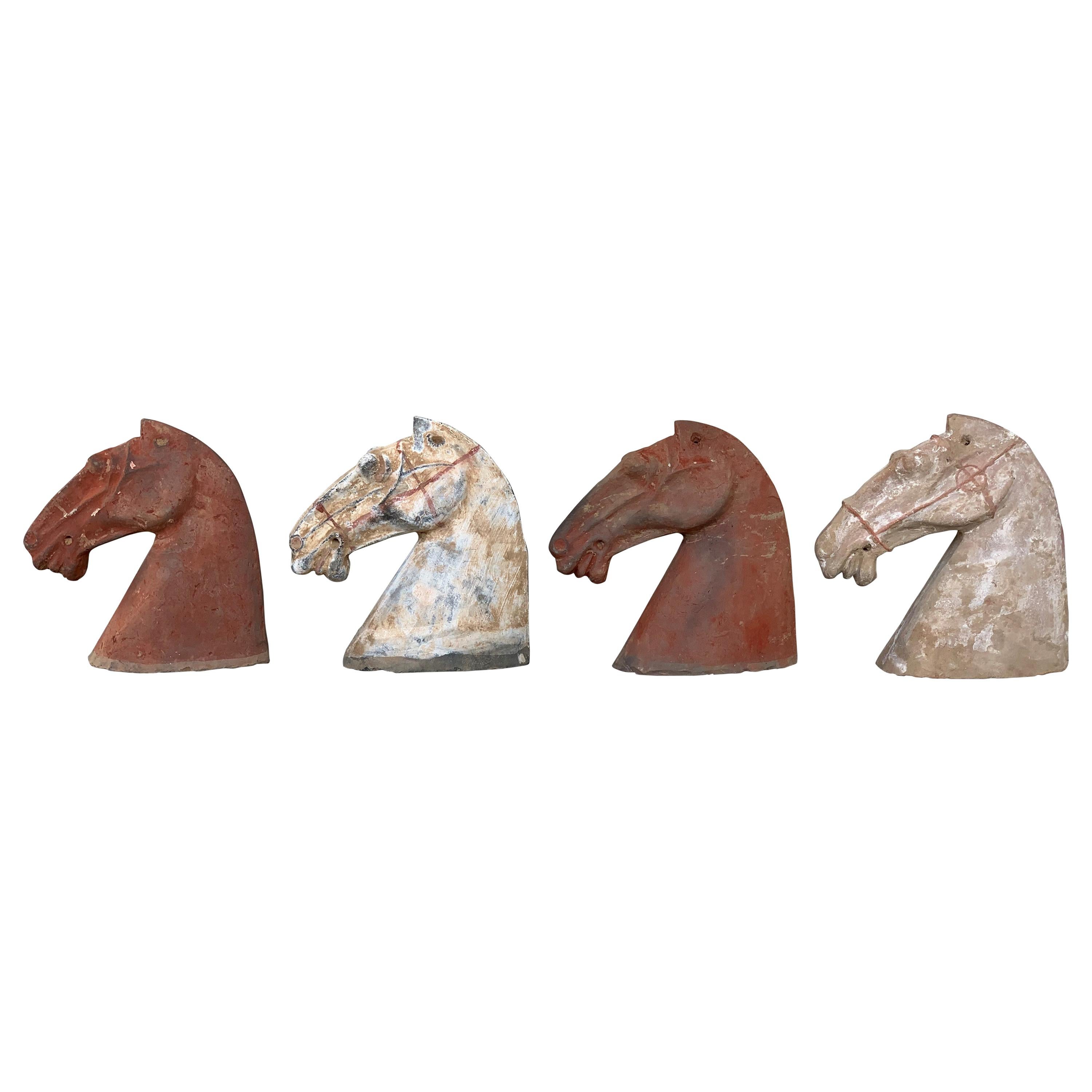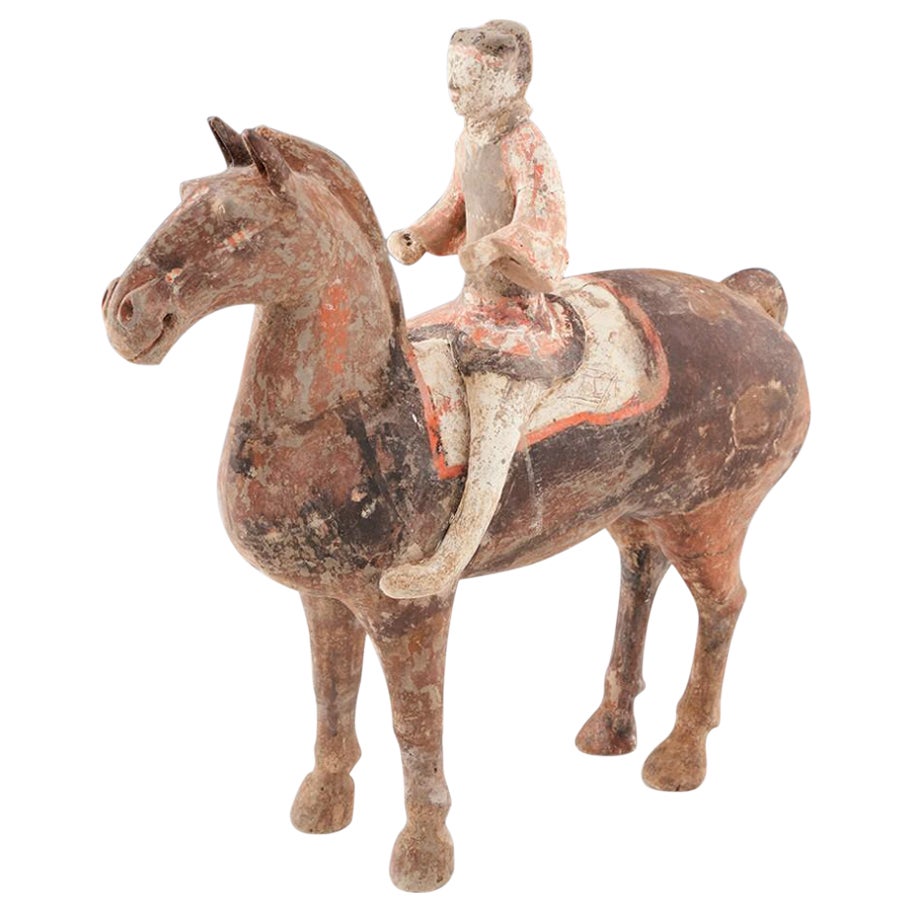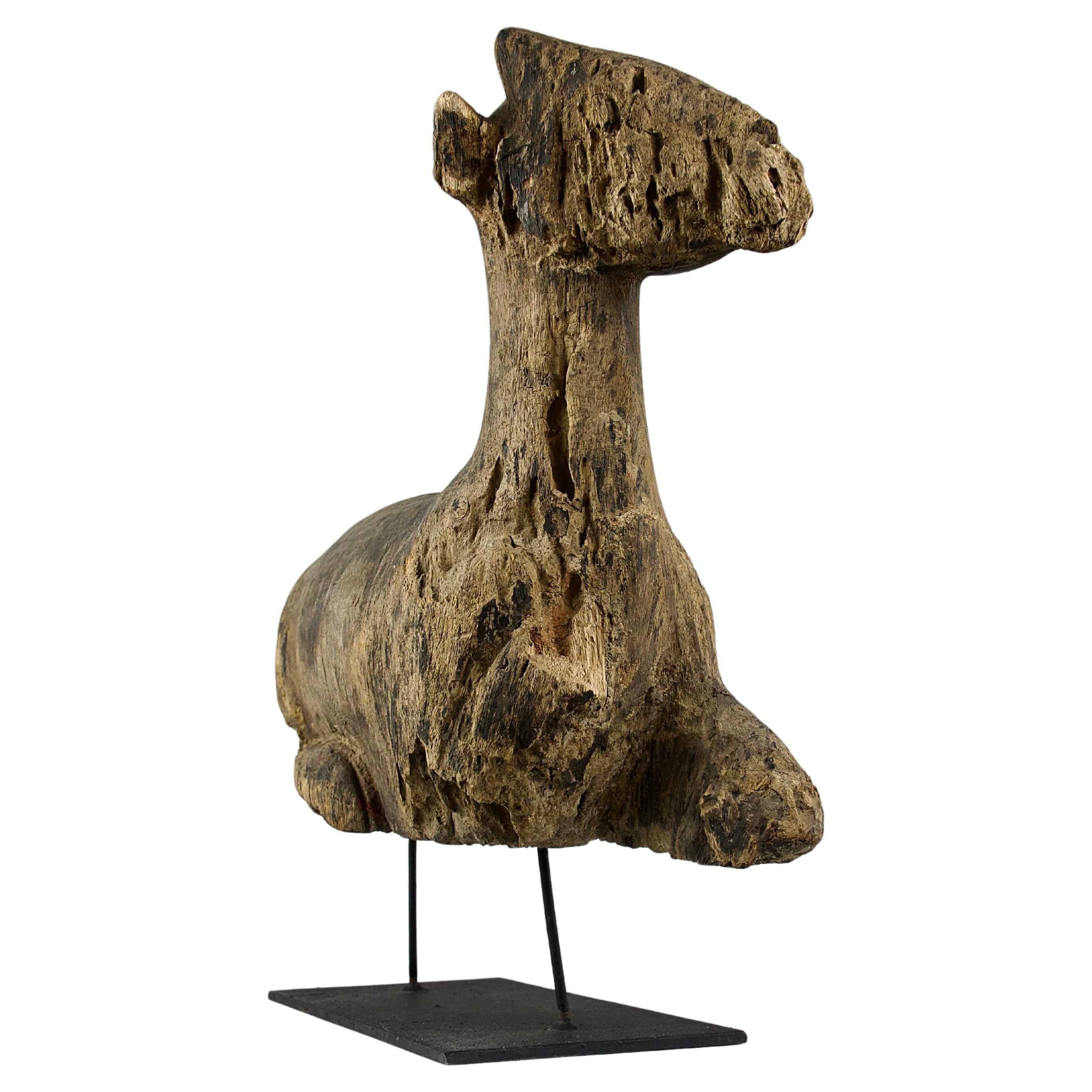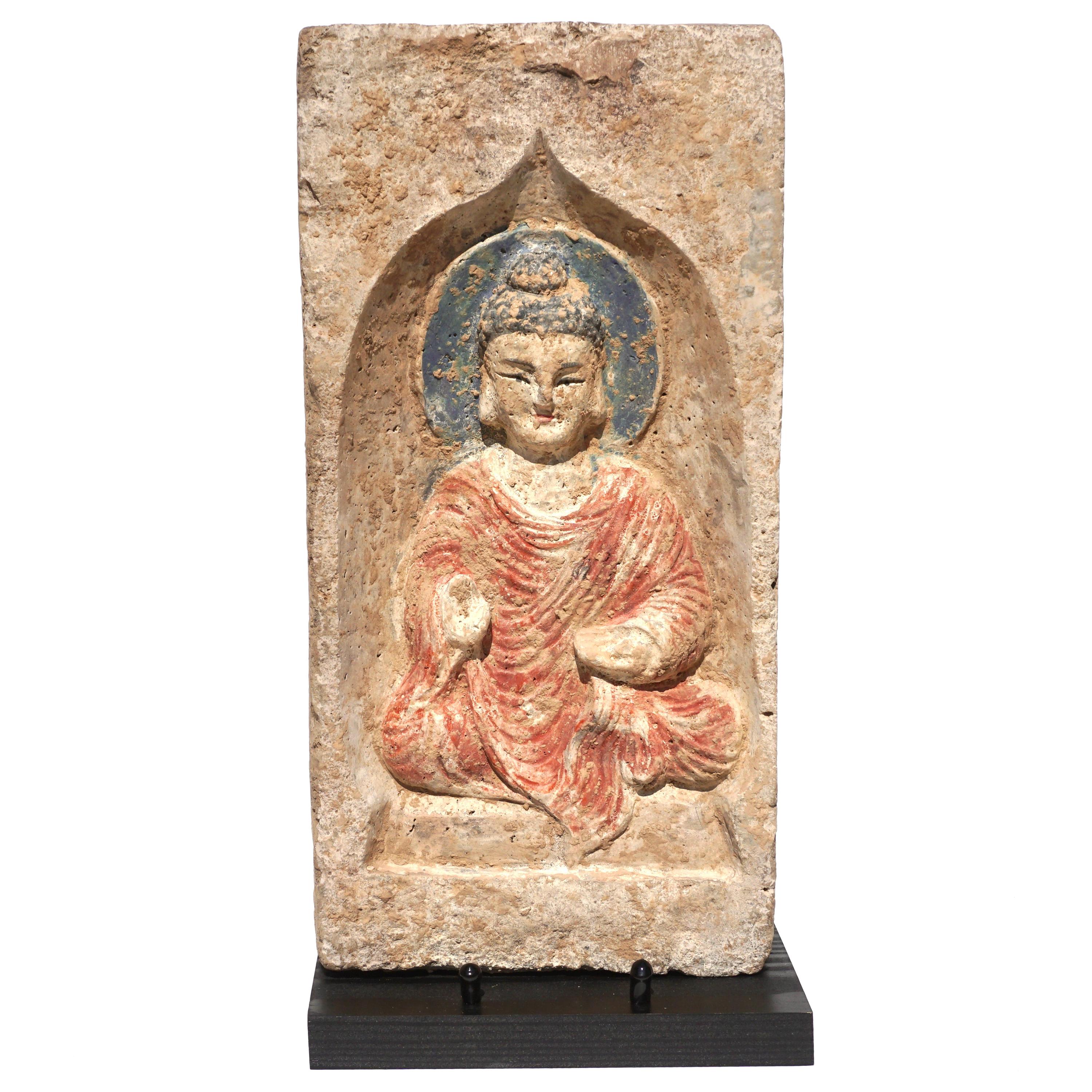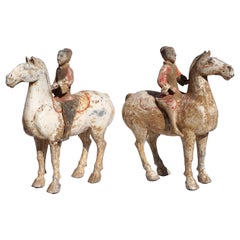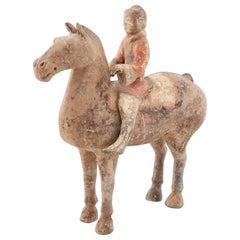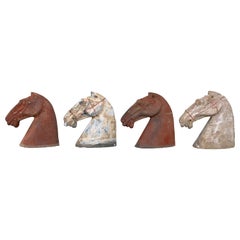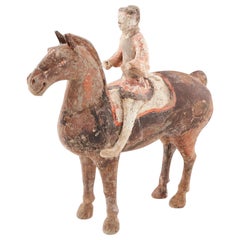
Large Pair of Han Dynasty Guardsmen Warriors '200BC-200AD' Attributed
View Similar Items
Want more images or videos?
Request additional images or videos from the seller
1 of 12
Large Pair of Han Dynasty Guardsmen Warriors '200BC-200AD' Attributed
About the Item
- Dimensions:Height: 16.5 in (41.91 cm)Width: 5 in (12.7 cm)Depth: 3 in (7.62 cm)
- Style:Han (Of the Period)
- Materials and Techniques:
- Place of Origin:
- Period:
- Date of Manufacture:200 BC
- Condition:Wear consistent with age and use.
- Seller Location:Dallas, TX
- Reference Number:1stDibs: LU1774214040532
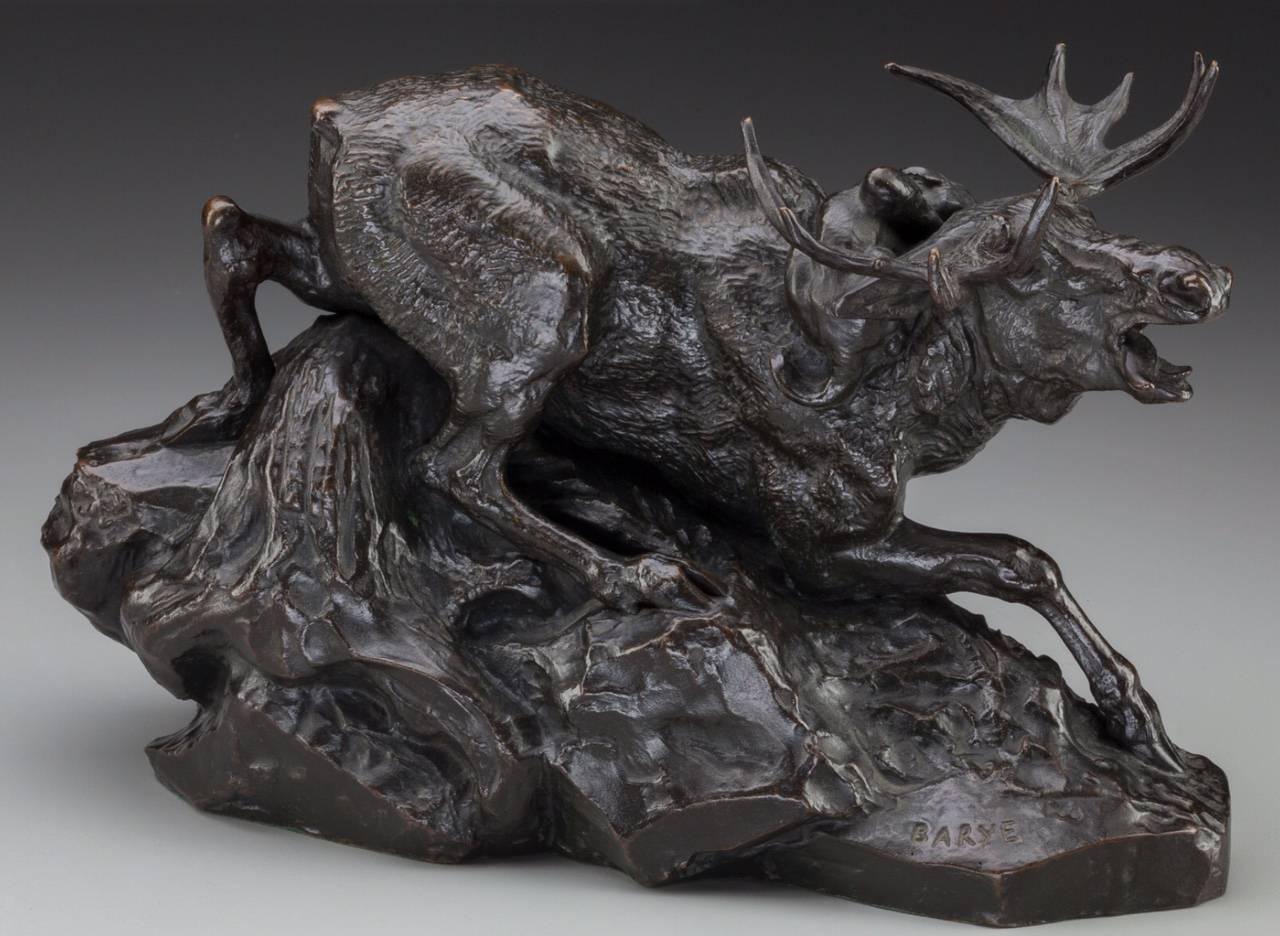
About the Seller
4.9
Gold Seller
These expertly vetted sellers are highly rated and consistently exceed customer expectations.
Established in 2000
1stDibs seller since 2015
402 sales on 1stDibs
Typical response time: 2 hours
More From This SellerView All
- Pair of Han Dynasty Horse Heads (206BC - 220AD) AttributedLocated in Dallas, TXPair of Chinese Han dynasty horse heads Han dynasty (206 BC-220 AD) earthenware gray pottery Each approx.: 6.25 inches high. 6.5 inches wide. 2...Category
Antique 15th Century and Earlier Chinese Han Animal Sculptures
MaterialsPottery
- Large Han Dynasty Pottery Sculpture of a DogLocated in Dallas, TXHan Dynasty life size Terracotta sculpture of a dog. Buried in a tomb for thousands of years; this mingqi companion has decided to come back and accompany the living. I’m actually taking a liking to this pup; most probably a fierce pit bull...Category
Antique 15th Century and Earlier Chinese Han Animal Sculptures
MaterialsTerracotta
- Pair of Han Dynasty pottery Horses and Equestrian RidersBy Emile GalléLocated in Dallas, TXA wonderful pair of Ex Sotheby’s painted Polychrome equestrian horse and riders made from gray pottery, presents beautifully and guaranteed authentic with provenance and COA. Measures: Height 11.5 inches and width 11 inches Condition: Possible professional restorations but not detectable. Provenance: Sotheby’s London. 16th November, 1999. Lot 12 (2 of 4 horsed in that lot) Sotheby’s New York, NY September 14, 2019. AVANTIQUES is dedicated to providing an exclusive curated collection of Fine Arts, Paintings, Bronzes, Asian treasures, Art Glass and Antiques. Our inventory represents time-tested investment quality items with everlasting decorative beauty. We look forward to your business and appreciate any reasonable offers. All of our curated items are vetted and guaranteed authentic and as described. Avantiques only deals in original antiques and never reproductions. We stand behind our treasures with a full money back return if the items are not as described. The importance of the horse in the history and culture of China can be viewed, in part, through the artistic legacy of this great civilization. In sculpture, painting, and literature, horses were glorified and revered. Horses were believed to be related to mythological dragons, reflecting their sacred status within society. During the unification of China under the Han Dynasty, bands of mounted nomadic warriors from the north threatened the country. In order to thwart their attacks, the Chinese sought to import stronger, faster steeds from Central Asia (as opposed to the Mongol ponies used by the invaders), eventually leading to the creation of the Silk Road. This small sculpture of a mounted soldier reveals the crucial military role of the horse. When compared to the diminutive stature of the rider, the importance of the horse becomes readily apparent. This creature provided security and strength, allowing the empire to secure its borders and expand its influences across Central Asia. The magnificent regalia of the horse, including a brilliantly painted saddle in red and green/gold, reflect the respect this animal received. The warrior as well is gorgeously decorated with a painted red tunic and gray chest...Category
Antique 15th Century and Earlier Chinese Han Animal Sculptures
MaterialsPottery
- Northern Wei Dynasty Terracotta Sculpture of Buddha 386-534 ADLocated in Dallas, TXC. 386-534 AD. Chinese Northern Wei Dynasty. A interim Han-Tang Dynasty terracotta brick in a cream-coloured fabric featuring a beautiful depict...Category
Antique 15th Century and Earlier Chinese Han Figurative Sculptures
MaterialsTerracotta
- Large Han Dynasty Terra-cotta Court Lady Figure TL TestedLocated in Dallas, TXHuge Han Dynasty Terracotta figure Of A Court Lady. TL Test conducted by Ralf Kotalla Laboratory in Germany. Report included. Height: 29...Category
Antique 15th Century and Earlier Chinese Han Figurative Sculptures
MaterialsTerracotta
- Northern Wei Dynasty Terracotta Sculpture Of A Seated Buddha 386-534 ADLocated in Dallas, TXC. 386-534 AD. Chinese Northern Wei Dynasty. A pre Tang Dynasty terracotta brick in a cream-coloured fabric featuring a beautiful depiction of a...Category
Antique 15th Century and Earlier Chinese Han Figurative Sculptures
MaterialsTerracotta
You May Also Like
- Han Dynasty Horse Sculpture, 206BC- 209 ADLocated in Tunbridge Wells, GBHan Dynasty Horse Sculpture, 206BC- 209 AD It is interetsing to note the position of the riders feet. They are gripping the shoulder of the horse. D...Category
Antique 15th Century and Earlier Chinese Han Animal Sculptures
MaterialsPottery
- Pair of Red Sculpture Han Dynasty Gray Pottery Horse Heads '206BC-220AD'Located in Miami, FLPair of Chinese Han dynasty horse heads Han dynasty Style (206 BC-220 AD) earthenware gray pottery Each approximate measures: 6 inches high. 6...Category
Mid-20th Century Chinese Han Sculptures and Carvings
MaterialsTerracotta
$3,360 Sale Price / set20% Off - Han Dynasty Horse Sculpture, 206 BC- 209 ADLocated in Tunbridge Wells, GBHan Dynasty Horse Sculpture, 206 BC- 209 AD It is interetsing to note the position of the riders feet. They are gripping the shoulder of the horse. ...Category
Antique 15th Century and Earlier Chinese Animal Sculptures
MaterialsPottery
- Chinese Han Dynasty Glazed Hu Vessel with Petite Handles, circa 202 BC-200 ADLocated in Yonkers, NYA Chinese Han dynasty period glazed ceramic Hu vessel circa 202 BC-200 AD, with petite decorative handles and wavy motifs. Crafted in China during the Han dynasty, this wine vessel, called a Hu vessel, features a circular belly topped with a narrow flaring neck. Adorned with wavy motifs and showcasing lateral decorative handles, this Han Hu...Category
Antique 15th Century and Earlier Chinese Han Ceramics
MaterialsPottery
- Han Dynasty, Laying Doe Wood Sculpture, China 100ADLocated in PARIS, FRSuperb sculpture of a laying doe from the Chinese Han Dynasty (206BC-220AD). Remainders of polychromic paint, namely red, symbol of good fortune and joy as well as the season of summer, and green, symbol of vigor and vitality and the season of spring. Mounted on base. Condition seen in pictures. Dimensions in cm ( H x L x l ) : - Sculpture : 35 x 40 x 10 - With base : 45.5 x 44 x 15 The Han Dynasty ruled China from 206 B.C. to 220 A.D. and was the second imperial dynasty of China. It is known for its promotion of Confucianism as the state religion and opening the Silk Road trade route to Europe, permanently altering the course of Chinese history. Han Dynasty art and inventions like paper still influence the world today. From the Han Dynasty to the present, deer can be found in many materials and media—rock crystal, nephrite, ink on paper, porcelain, cloisonné enamel, jade, bamboo root, textile, bronze, etc.—alone or in groups, among trees and rocks and in various positions. They appear on everyday objects, from boxes to incense burners, incense holders, lamps, mirror holders and the droppers scholars used when they wrote. A symbol of longevity and grace in Chinese mythology, the word deer is pronounced lu, a homonym for emoluments—favors granted to officials. They therefore represent wealth, nobility and success in imperial examinations (civil service exams for selecting candidates for the state bureaucracy in Imperial China). Deer were the faithful companions of Shu Lao, the god of longevity, and the goddess Magu. They were reputed to live long and to be the only creature able to find the mushroom of immortality, linghzhi. Although its spots are different, deer are sometimes confused or associated with stags, a Manchu hunting trophy whose antlers served to make prestigious furniture. (La Gazette Drouot, Claire Papon) For the colours found on this piece, in Chinese culture, red symbolizes good fortune and joy. Green, symbolizes the spring when everything is brimming over with vigor and vitality. The Han Dynasty (206 B.C. to 220 A.D.) continued the Qin Dynasty’s use of dark colours, but incorporated red. During the earlier years, or Western Han Dynasty, ordinary people wore red while court dress was black. Shoes were red in color. The clothing worn for sacrificial rites was black edged with red. In the later Eastern Han Dynasty, red symbolized the dynasty’s “fire Virtue” and became predominant. Court dress was red. Sacrificial rites called for a red-edged white layer under robes with red socks...Category
Antique 15th Century and Earlier Chinese Han Mounted Objects
MaterialsWood
- Large Chinese Terracotta Tomb Figure East Han DynastyLocated in Atlanta, GAA Chinese terracotta tomb figure (Ni Yong) from East Han Dynasty (25-220 AD), likely from the area of nowadays Sichuan. It appears to depict a groom figure with attires and harness i...Category
Antique 15th Century and Earlier Chinese Han Sculptures
MaterialsTerracotta
Recently Viewed
View AllMore Ways To Browse
Han Dynasty Terracotta
Pottery Stand Wood
Chinese Sword
Lucite Collar
Antique Chinese Swords
Chinese Warrior Sculpture
A Pair Of Terracotta Figures
Chinese Terracotta Figures
Han Dynasty Wood
15th Century Collar
15th Century Collars
Antique Western Clothing
Terracotta Warrior
Original Han Dynasty Terracotta
15th Century Sword
Chinese Terracotta Warriors
Han Warrior
Sandle Wood


